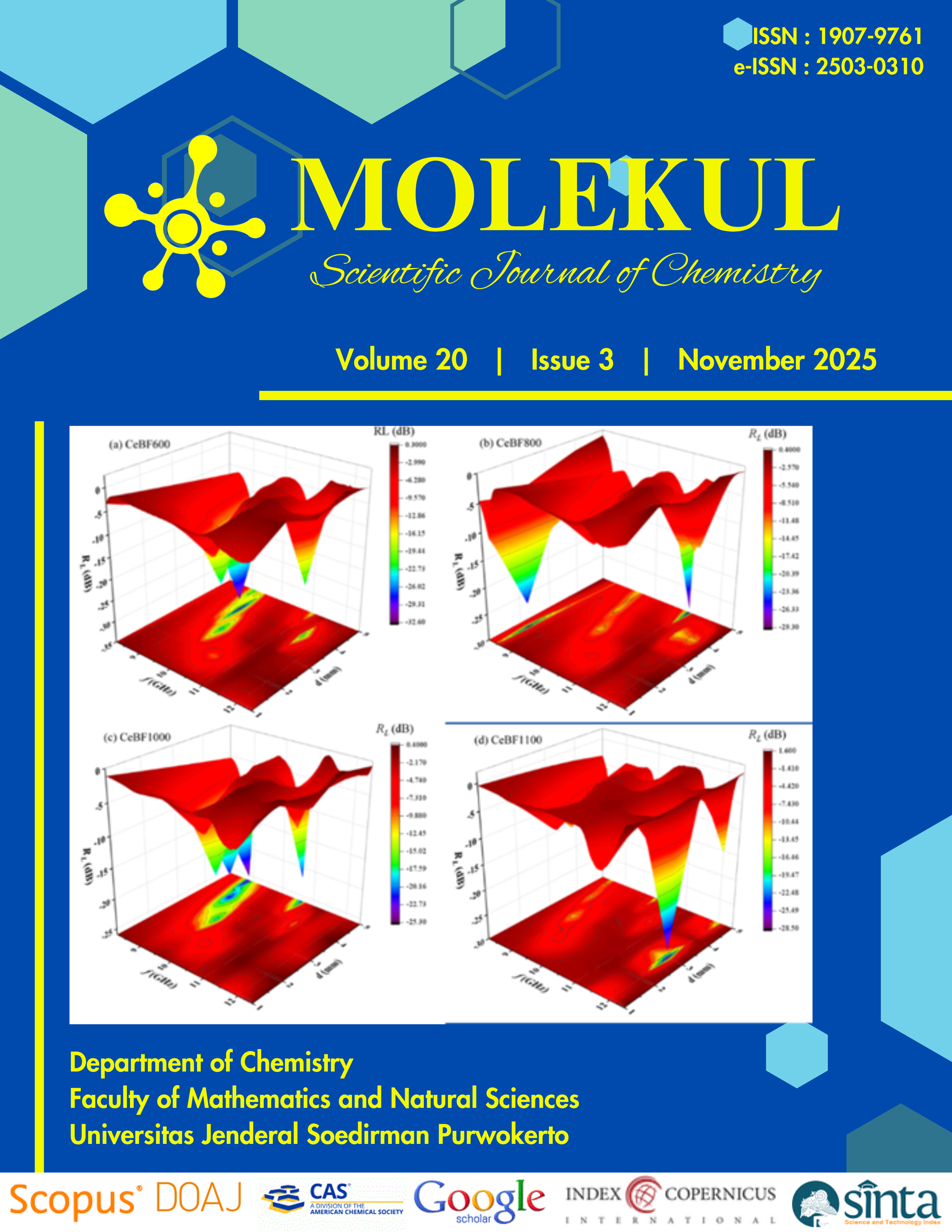Band Gap Energy of Some Kekuléan Polycyclic Aromatic Hydrocarbon as Finite-Size Graphene: A DFT Study
Abstract
Abstract. The effect of size and shapes of some Kekuléan Polycyclic Aromatic Hydrocarbon (PAH) were studied using the density functional theory with B3LYP hybrid function and LANL2DZ basis set using Gaussian09 software program. Four different geometries of PAH: Linear (L), Hexagonal (H), Zigzag (Z) and Rhombus (R) were evaluated. The results showed that band gap energy (Eg) tends to decrease as the size of the increase, but some geometry decrease faster. Simple analysis also showed that |log(N)| = o(Eg(N)) for L, H and R geometries, indicating that Eg will become 0 for a finite size. These trends indicate that PAH size and shape can be tuned to modulate electronic properties and redox behavior, offering routes to optimize PAH-based anodes for LIBs. In terms of industrial relevance, the ability to tailor Eg through geometry provides design guidelines to achieve higher energy density, faster charging, and improved cycling stability, while potentially enabling scalable and cost-effective synthesis and processing of carbon-based organic electrode materials. The findings support the development of PAH-based anodes as a viable pathway to enhance performance and manufacturability in lithium-ion battery technology.
Keywords: Density functional theory, electronic structure, energy materials, polycyclic aromatic hydrocarbons, shape effect, size effect
Authors agree with the statements below:
- Authors automatically transfer the copyright to the MOLEKUL journal and grant the journal right of first publication with the work simultaneously licensed under a Creative Commons Attribution 4.0 International License (CC BY 4.0).
- Authors are able to enter into separate permission for the non-exclusive distribution of the journal's published version of the work (e.g., post it to an institutional repository or publish it in a book), with an acknowledgment of its initial publication in this journal.













